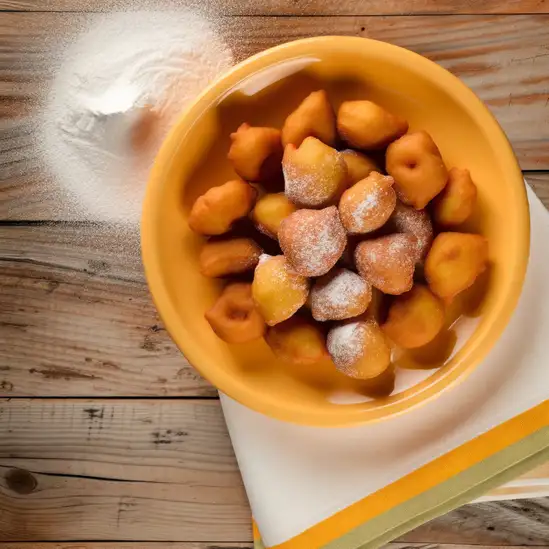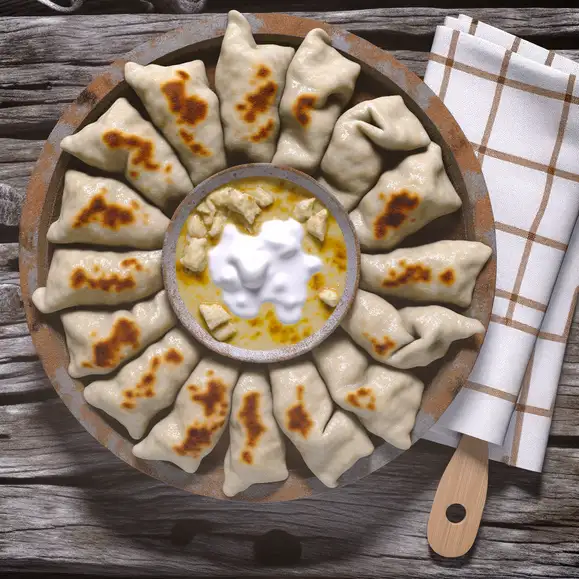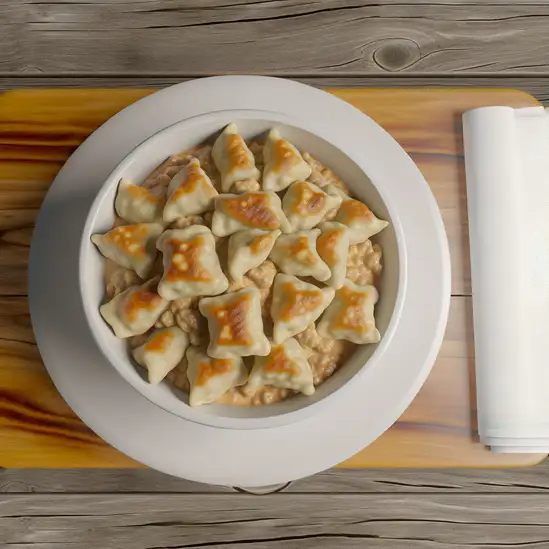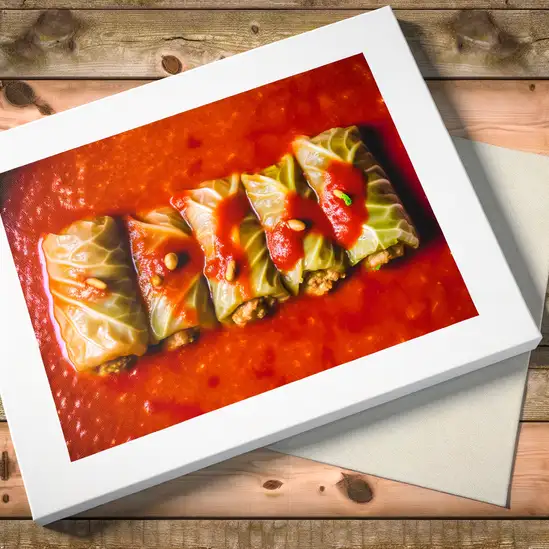



If you ever find yourself wandering through northern Croatia,Varaždin is the kind of place that wraps you in a gentle,old-world embrace the moment you step into its cobbled streets. There’s a calm rhythm here,like the city breathes through its baroque architecture and leafy parks. As you stroll past pastel-colored buildings with ornate facades,you’ll catch the faint scent of freshly baked pastries mingling with the earthy aroma of nearby gardens. It’s a city that feels both timeless and alive,where history isn’t just in museums but woven into everyday life. The heart of Varaždin pulses in its vibrant squares,where locals sip coffee at outdoor cafés,chatting animatedly as the sun warms the stone beneath their feet. You’ll hear the soft clinking of glasses and the occasional burst of laughter,blending with the distant melody of a street musician’s violin. The city’s character shines brightest during its festivals,especially the Špancirfest,when the streets come alive with colors,music,and the irresistible buzz of creativity. What really makes Varaždin stand out is its blend of elegance and warmth. It’s a place where you can savor traditional Croatian dishes—think hearty stews and delicate strudels—while feeling like you’re part of a close-knit community. Whether you’re wandering through the castle’s shadow or relaxing by the Drava River,Varaždin invites you to slow down,soak in the charm,and discover a side of Croatia that feels refreshingly genuine.
The information on this page is currently being reviewed by Tripkliq and should be used as a guide only
Eng word: Hello
Eng pronunciation: Bohk
Local language: Bok
Eng word: Goodbye
Eng pronunciation: Doh-vee-jen-ya
Local language: Doviđenja
Eng word: Thank you
Eng pronunciation: Hvah-lah
Local language: Hvala
Eng word: How much
Eng pronunciation: Koh-lee-koh
Local language: Koliko
Eng word: Toilet
Eng pronunciation: Toh-ah-let
Local language: Toalet
Eng word: Help me
Eng pronunciation: Poh-moh-zee mee
Local language: Pomozi mi
Eng word: Yes
Eng pronunciation: Dah
Local language: Da
Eng word: No
Eng pronunciation: Neh
Local language: Ne
Eng word: Excuse me
Eng pronunciation: Oh-proh-stee-teh
Local language: Oprostite
Varaždin is renowned for its well-preserved Baroque architecture, making it the oldest Baroque city in Croatia. The city's historic center is filled with beautiful buildings, palaces, and churches from the Baroque period.
Varaždin Castle, also known as Stari Grad, is a stunning medieval fortress that dates back to the 12th century. It has been beautifully preserved and now houses the Varaždin City Museum, showcasing the city's rich history.
Varaždin is often referred to as the 'City of Angels' due to its numerous churches and religious buildings. The city has a strong spiritual heritage, with many angelic statues and motifs found throughout.
Designed by Hermann Haller in the early 20th century, Varaždin Cemetery is considered one of the most beautiful cemeteries in Europe. It is known for its park-like layout, artistic tombstones, and serene atmosphere.
Špancirfest is Varaždin's most famous festival, held annually in late August. This vibrant street festival features music, theater, art, and gastronomy, attracting visitors from all over the world.
The Drava River flows near Varaždin, providing scenic beauty and recreational opportunities. Visitors can enjoy activities such as boating, fishing, and picnicking along the riverbanks.
Varaždin is home to several thermal springs, known for their healing properties. The Varaždin Spa offers a range of wellness treatments and is a popular destination for relaxation and rejuvenation.
The Varaždin Cathedral, also known as the Cathedral of the Assumption of the Virgin Mary, is a stunning example of Baroque architecture. It was built in the 17th century and features beautiful frescoes and altars.
The Varaždin City Hall is one of the oldest city halls in Europe, dating back to the 16th century. It is a beautiful Renaissance building that still serves as the seat of the city government.
In Varaždin, the most common Power Adaptor is Type C, Type F.



A method of cooking where meat and vegetables are slow-cooked under a bell-like lid, resulting in tender and flavorful dishes.

Small, deep-fried doughnuts flavored with citrus and often dusted with powdered sugar, popular during festive seasons.

A traditional Croatian dish made of dough filled with cheese, often served baked or boiled, and sometimes topped with sour cream.

Similar to Štrukli, this dish is a baked pastry filled with cheese and cream, often served as a dessert or a savory dish.

Cabbage rolls stuffed with minced meat and rice, cooked in a tomato sauce, a comforting dish often served in winter.

A spicy, cured sausage made from pork, seasoned with paprika and garlic, often enjoyed as a cold cut or in various dishes.

A hearty bean stew, often made with smoked meat, and seasoned with various spices, popular in many Croatian households.
If you ever find yourself wandering through Split,it’s like stepping into a living,breathing storybook where ancient history and vibrant modern life dance together effortlessly. The moment you stroll along the Riva promenade,the salty breeze from the Adriatic mingles with the aroma of fresh espresso and grilled seafood wafting from nearby cafés. Locals chat animatedly in the sun-dappled squares,their laughter blending with the distant hum of boats bobbing gently in the harbor. There’s a laid-back energy here that feels both timeless and alive,inviting you to slow down and soak it all in.
Split’s heart beats strongest in Diocletian’s Palace,a sprawling Roman fortress that’s less a museum and more a neighborhood where people live,shop,and gather. Walking through its ancient stone alleys,you’ll catch glimpses of colorful markets,artisan shops,and cozy taverns tucked into centuries-old walls. At night,the city transforms as lanterns flicker on,and the sound of live klapa singing—traditional a cappella harmonies—drifts through the air,wrapping you in a warm,soulful embrace.
What really makes Split unforgettable is how effortlessly it blends the old with the new. You can savor a plate of fresh octopus salad while watching fishermen haul in their catch,then wander to a rooftop bar for a cocktail as the sun sets behind the islands. It’s a place where every corner tells a story,every meal feels like a celebration,and every moment invites you to become part of its ongoing tale.
If you ever find yourself wandering through the sun-drenched streets of Dubrovnik,you’ll immediately feel like you’ve stepped into a living storybook. The city’s ancient stone walls rise proudly against the sparkling Adriatic,and as you stroll along the marble-paved Stradun,the salty sea breeze mingles with the scent of fresh pine and blooming bougainvillea. There’s a rhythm here—a gentle hum of life where history and modern charm dance together effortlessly.
Dubrovnik’s character is woven into every corner:the clatter of café cups,the murmur of locals chatting in cozy taverns,and the distant call of seagulls overhead. You can almost taste the city in the air—briny and fresh,with hints of grilled seafood and ripe figs from the markets. Sitting at a seaside restaurant,watching the sun dip behind the fortress walls,you’ll savor dishes bursting with Mediterranean flavors,paired with a glass of crisp Croatian white wine.
What makes Dubrovnik truly special is how it balances its rich past with a vibrant present. The city’s narrow alleys invite exploration,revealing tucked-away galleries,artisan shops,and lively squares where music spills out into the streets. Whether you’re tracing the footsteps of ancient mariners or simply soaking up the golden light on a quiet terrace,Dubrovnik feels like a warm embrace—inviting,timeless,and utterly unforgettable.
If you ever find yourself wandering the Dalmatian coast,Zadar is one of those places that sneaks up on you with its quiet charm and unexpected magic. The moment you step onto its ancient stone streets,there’s this warm,timeless feeling—like the city is gently humming a tune just for you. The salty breeze from the Adriatic mingles with the scent of fresh pine and blooming jasmine,wrapping around you as you stroll along the waterfront. It’s a place where history isn’t just in museums; it’s alive in the crumbling Roman ruins,the medieval churches,and the lively squares where locals gather to chat and sip coffee.
What really sets Zadar apart is its playful spirit. You’ll hear it in the waves as they dance through the Sea Organ,an extraordinary installation that turns the sea’s movement into haunting melodies. And just a few steps away,the Sun Salutation lights up the night with a mesmerizing display of colors,making the waterfront feel like a celebration of nature and art. Grab a seat on the stone benches,watch the sun dip below the horizon,and you’ll understand why Alfred Hitchcock once called Zadar the most beautiful sunset in the world.
The city’s vibe is relaxed but vibrant,with cozy konobas serving up fresh seafood and local wines that taste like the essence of the region. Whether you’re wandering through the bustling market,exploring narrow alleys,or simply soaking in the views from a café terrace,Zadar invites you to slow down,breathe deeply,and savor every moment.
If you ever find yourself wandering the sun-drenched coast of Croatia,Pula is the kind of place that wraps around you like a warm,familiar blanket. There’s this effortless charm in the air—ancient stone walls bathed in golden light,the salty breeze carrying the distant hum of boats and laughter from seaside cafes. Walking through Pula feels like stepping into a living history book,but one that’s vibrantly alive with locals chatting over espresso and the clinking of glasses filled with crisp,local wine.
The city’s Roman amphitheater is impossible to miss,standing proudly as a testament to centuries past,yet it pulses with modern energy during summer concerts and festivals. Strolling through the narrow streets,you’ll catch the scent of fresh seafood grilling nearby,mingling with the earthy aroma of pine trees from the surrounding hills. It’s a place where time slows just enough for you to savor a plate of black risotto or sip on a cold craft beer while watching the sun dip into the Adriatic.
What really makes Pula special is its blend of rugged coastal beauty and warm,unpretentious spirit. The locals have a relaxed vibe,welcoming you with genuine smiles and stories about their city’s layered past. Whether you’re exploring Roman ruins,lounging on a pebble beach,or simply people-watching in a bustling square,Pula invites you to soak in its rich culture and easygoing rhythm. It’s a city that stays with you long after you’ve left,whispering tales of history,sea,and sun.
If you wander into Rijeka,you’ll immediately feel its pulse—a lively,salty breeze mingling with the hum of a bustling port city that’s unapologetically itself. It’s not polished like some of Croatia’s more famous coastal towns,but that’s exactly what makes it so magnetic. The streets buzz with a mix of locals chatting over coffee,the clatter of trams,and the occasional distant call of seagulls. You can almost taste the sea in the air,a briny freshness that pairs perfectly with a glass of local Malvazija wine at a cozy café.
Rijeka wears its history on its sleeve,from the grand Austro-Hungarian architecture to the colorful street art that pops up in unexpected corners. The city’s character is a blend of old-world charm and modern creativity,with a vibrant arts scene that spills into its festivals and galleries. Strolling along the waterfront,you’ll catch fishermen unloading their catch,the scent of grilled fish wafting from nearby taverns,and the laughter of families enjoying the evening.
What really sticks with you is Rijeka’s warmth—people here are genuine,proud of their city’s quirks and stories. Whether you’re exploring the lively market,climbing up to Trsat Castle for sweeping views,or simply soaking in the rhythm of the harbor,Rijeka invites you to slow down and savor its unique blend of sea,culture,and everyday life. It’s a place that feels like a well-kept secret,but one you’ll want to shout about once you’ve been.
If you wander into Šibenik,you’ll immediately feel like you’ve stepped into a place where history and the sea have been quietly chatting for centuries. The city’s old stone streets,worn smooth by footsteps over hundreds of years,invite you to slow down and soak in the atmosphere. There’s a gentle hum of life here—fishermen unloading their catch,the clinking of glasses from cozy waterfront cafés,and the distant call of seagulls mingling with the soft splash of waves against the harbor walls.
What makes Šibenik truly special is its blend of rugged Adriatic charm and rich cultural layers. The sun warms the limestone walls,making them glow golden in the late afternoon,while the scent of pine trees drifts in from the nearby hills. You can’t miss the stunning Cathedral of St. James,a masterpiece carved entirely from stone,where every detail tells a story. Wander through the narrow alleys,and you’ll find vibrant markets bursting with fresh figs,olives,and local cheeses that taste like sunshine.
Evenings in Šibenik have a relaxed,almost magical feel. The city lights flicker on,reflecting in the calm waters,and the air fills with the aroma of grilled seafood and herbs. Locals gather in lively taverns,sharing laughter and stories over glasses of crisp Croatian wine. It’s a place where time slows just enough for you to savor the simple pleasures—good food,warm smiles,and the endless blue horizon.
Tourists may be offered fake rental properties or be asked for upfront payments for non-existent accommodations.
Scammers may approach tourists pretending to collect donations for fake charities or causes.
Tourists may encounter individuals or unofficial exchange offices offering poor exchange rates or counterfeit currency.
Unlicensed individuals may pose as tour guides and charge high fees for inaccurate or subpar tours.
Some taxi drivers may overcharge tourists by not using the meter or taking unnecessarily long routes.
Crowded areas, such as markets or festivals, may attract pickpockets targeting tourists' wallets and valuables.
Certain restaurants may inflate bills by adding hidden fees or charging for items not ordered.
Vendors may sell counterfeit goods or overcharge tourists for low-quality souvenirs.
The possession, use, and distribution of illegal drugs are strictly prohibited in Varaždin, Croatia. Penalties for drug-related offenses can be severe, including hefty fines and imprisonment. The use of recreational drugs is not tolerated, and law enforcement takes a stringent approach to drug-related activities.
In Varaždin, Croatia, smoking is generally prohibited in enclosed public spaces, including restaurants, cafes, and public transportation. There are designated smoking areas in some establishments, but it is always best to ask if you are unsure. Smoking is also prohibited in certain outdoor areas, such as playgrounds and sports facilities. Violations can result in fines.
Vaping is subject to similar regulations as smoking in Varaždin. It is prohibited in enclosed public spaces and certain outdoor areas. Some establishments may have designated areas for vaping, but it is advisable to check with the venue. The sale of vaping products to minors is strictly prohibited.
What are other people saying about Varaždin?
Recent Social posts about Varaždin
There is nothing to show you for now.